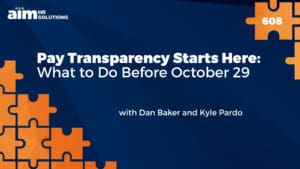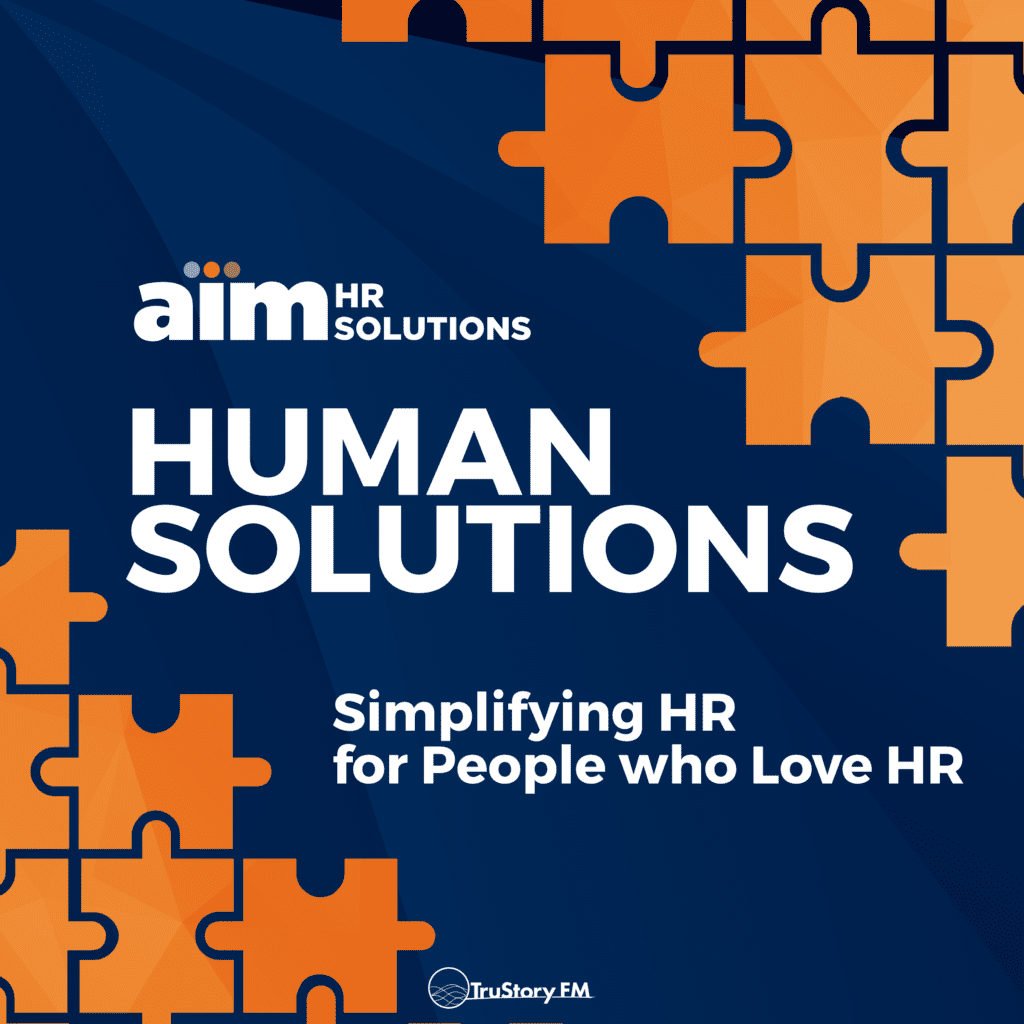“What a poorly done L&D strategy is, is reactionary. It is short term. It’s not thinking about the big picture,” says Jen Moff, Vice President of Learning and Development at AIM HR Solutions, in this week’s episode of Human Solutions. Pete Wright sits down with Moff to discuss how HR professionals can design learning and development programs that strategically align with and achieve organizational goals.
Developing a True Learning Culture
An ideal learning and development strategy takes the long view, considering what an organization wants its brand and culture to represent years down the road. It requires dedicating real budget and resources to L&D across all levels of staff, not just selected trainings as needs arise. As Moff explains, “Having a line item in your budget for L&D initiatives, for professional development initiatives, and not just these reactionary, ‘Oh, someone is doing such and such. We need this now’” is the difference between a program that transforms and one that merely checks the box.
Getting a Seat at the Leadership Table
To craft an effective strategy, L&D leaders need a view into organizational needs and goals. This requires active partnership and communication across departments. As Wright puts it, “There is no way for you to have an understanding of the organizational needs from L&D unless you are a part of the conversation at a high enough level to be able to hear them.” Moff stresses that executives must actively invite this cross-functional collaboration for it to work.
Measuring True Behavior Change
A well-structured program is ultimately measured by lasting employee behavior change that aligns with corporate values and furthers strategic goals. As Moff explains, “training is a seed that gets planted” but real growth only happens through “integration of what was learned into regular ways of being.” This requires ongoing reinforcement after the training itself ends.
Key Takeaways
- The hallmarks of a strategic learning program versus a reactive one
- Why cross-functional collaboration is essential for L&D success
- How to secure stakeholder buy-in and budget for impactful training
- Measuring L&D through changed behaviors over time, not one-off sessions
With decades of combined HR expertise, Jen outlines concrete steps to build a learning culture that transforms organizations from the inside out. Tune in for paradigm-shifting insights to drive strategic results.
Links & Notes











